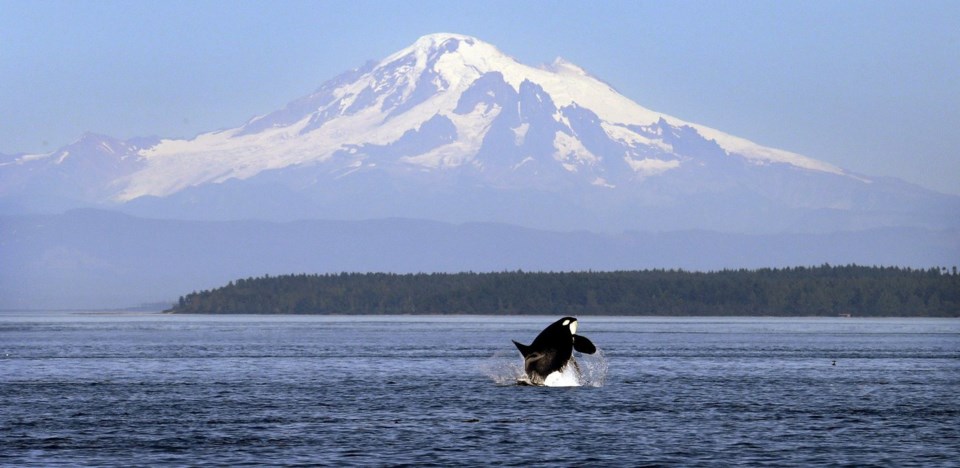VANCOUVER — A key assumption about dwindling numbers of southern resident killer whales pins the blame on a lack of salmon, but a study out of the University of British Columbia has found they have twice the number of chinook available in summer as their much healthier cousins, the northern residents.
Researchers spent months tracking the two whale populations' preferred food in the Salish Sea and the waters of northern Vancouver Island and their findings have now been published in the peer-reviewed research journal PLOS One.
Andrew Trites, the report's co-author and the director of the marine mammal research unit at the university, said they didn't find what they expected.
"It was surprising,” Trites said of his first reaction to their discovery.
“When you find what you don't expect, then you look even harder at your data, and your first thought is, you must have done something wrong."
This month's latest census of the endangered southern residents found they number just 73, compared with the growing population of the northern residents at about 300.
Trites said they double and triple-checked the salmon numbers found during the summer of 2020.
“I guess I've learned over time that we have to be careful about jumping to quick conclusions,” he said.
The report found chinook were twice as prevalent in the southern residents' feeding areas compared to those of the northern residents.
"This implies that southern resident killer whales have greater access to chinook salmon compared to northern residents during summer — and that any food shortage southern residents may be encountering is occurring at other times of year, or elsewhere in their range," said the study published Oct. 10.
Trites said researchers collaborated with commercial and sport fishermen and whale-watching companies to identify the feeding areas from the entrance of Juan de Fuca Strait off southern Vancouver Island and the mouth of the Fraser River, up to waters off the northern end of Vancouver Island.
The widening population gap between the two groups of fish-eating whales has variously been attributed to ecological and biological differences between regions, such as salmon availability, competition, physical disturbance, underwater noise, contaminants and inbreeding.
"However, food availability likely plays the greatest role in limiting their carrying capacities," the study said of southern residents.
Trites said noise is more common in southern waters which prevents southern residents from catching prey.
“It’s a bit like going into a busy supermarket and you are shopping with somebody else, but you can’t tell each other what to get because it’s too noisy.
"It’s so hustling with so many people in it that you can’t hear each other, you can't talk about what you’re trying to get for dinner,” said Trites.
The study said vessel noise can "mask communication" between pod members and interfere with foraging and navigation — while the physical presence of vessels can also reduce foraging efforts.
"Killer whales are more likely to encounter greater numbers of vessels in the Salish Sea than in the north (Vancouver) Island waters, which could mean that salmon are less accessible to southern residents than to northern residents despite there being a higher abundance of chinook," the study said.
Trites said some may find it difficult to accept the results of the study, but it could make people rethink their assumptions.
“And I think if we really want to save southern resident killer whales, we need to think bigger and not assume that we've solved the problem because if we're wrong, we're dooming them to extinction," said Trites.
This report by The Canadian Press was first published Oct., 2024.
Nono Shen, The Canadian Press




